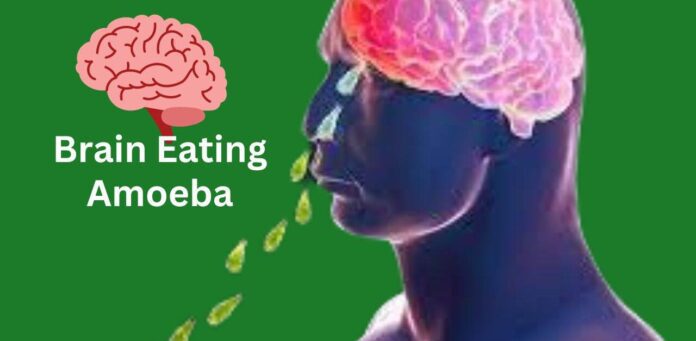Understanding Brain Eating Amoeba
Introduction
Learning to Brain Eating Amoeba.That Eat Brains a kind of single-celled organism found in fresh water that is warm and soil that is additionally referred to as Nigeria fowleri. Primary amebic meningoencephalitis (PAM), a rare but serious brain infection, may result from infection with this amoeba, however it is not in common.

When polluted water enters the sinuses, Naegleria fowleri generally enters the body through the nose. The amoeba are able to reach the brain and cause inflammation and harm to the tissues in there. A neck that is stiff, fever, headache, nausea, and vomiting are a few of the initial indications of an infection. As the infection grows more severe, confusion, seizures, and hallucinations may appear as symptoms. Some known survivors of PAM are present and unfortunately, the majority of cases are fatal.
Initial symptoms of Understanding Brain Eating Amoeba infection include fever, headache, nausea, vomiting, and a stiff neck. As the infection increases, illusions seizures, and confusion are probable signs. Unfortunately, most cases of PAM are fatal, with only a handful of known survivors.
The best way to prevent infection with Naegleria:
Swimming or diving in warm freshwater must be prevented if you are suffering from Naegleria fowleri, especially in locations in which the water is sluggish. Wearing the nose clips or preserving your head above the water may reduce your risk if you need to swim in warm freshwater. In addition, eliminating your sinuses with distilled water or sterile saline can help reduce the chance of infection. If you believe you may have arise into exposure to Naegleria fowleri, you must always seek healthcare as soon as possible. Even though PAM is not common early identification and treatment can save lives. Treatment generally includes antifungal and antimicrobial medications in addition to aggressive symptom management.
Question and answer of Brain Eating Amoeba:
Question: How does brain-eating amoeba happen?
Answer: The consuming of the brain Amoeba, or Naegleria fowleri as it is logically known, enters the body through the nose mostly through traveling in warm freshwater bodies including lakes, rivers, and ponds.Once the amoeba goes into the nasal passages and developments toward the brain, it can result in primary amebic meningoencephalitis (PAM), an uncommon but harmful infection.
Question: Is brain-eating amoeba found in India?
Answer: Yes reported in India. Cases are relatively rare, but it is important to be aware of the potential risks and take precautions when participating in water-related activities in freshwater sources.
Question: Can brain-eating amoeba survive in drinking water?
Answer: The brain-eating amoeba can survive in untreated or poorly treated freshwater sources. However, it is relatively rare in drinking water systems that are properly disinfected and chlorinated. Drinking water that meets safety standards is generally considered safe from this amoeba.
Question: What temperature kills amoeba?
Answer: Naegleria fowleri amoeba are sensitive to temperature. They thrive in warm water, typically between 30°C to 40°C (86°F to 104°F). Low temperatures, especially above 45°C (113°F), can effectively kill these amoebae.
Question: When was the last case of brain-eating amoeba reported?
Answer: The incidence of brain-eating amoeba can vary from year to year and from region to region. It is essential to monitor local health reports and stay informed about any recent cases in your area. These cases are relatively rare, but they do occur sporadically.
Question: Can a brain-eating amoeba survive on dry surfaces?
Answer: No, Naegleria fowleri, the amoeba that eats your brains, can not survive on dry surfaces. It requires a moist environment like water to thrive. Once the amoeba dries, it becomes inactive and poses no threat. However, it is important to exercise caution when engaging in water-related activities in potentially amoeba-infected water.
Conclusion
Recognizing Amoeba That Eat Brains Brain-eating amoeba infections are extremely uncommon but can be dangerous. Prevention is key, and avoiding warm freshwater and using nose clips when swimming or diving can help reduce your risk of infection




